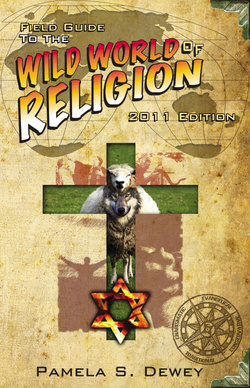Читать книгу Field Guide to the Wild World of Religion: 2011 Edition - Pamela J.D. Dewey - Страница 40
На сайте Литреса книга снята с продажи.
Examination
ОглавлениеTeachers and groups proclaiming that the fulfillments of major Bible prophecies are imminent have been around since the time of Christ. The following are just a tiny few examples of such up to the 1800s. (Abbreviations of titles in the citations refer to books in the bibliography at the end of this chapter.)
In the second half of the second century, a Christian convert named Montanus succeeded in convincing many that he had been given a personal revelation directly from God that the Second Coming was at hand. It would happen at Pepuza (near modern Angora). “The prophet’s personality and eloquence won him a host of disciples, who flocked in such numbers to the appointed spot that a new town sprang up to house them.” (P. Hughes, quoted in WPF, p. 6.)
Joachim of Fiore (ca 1135-1202) a Catholic Abbot, did not believe in a literal second coming, but rather in a new stage of earthly influence on earth by the Church, which would come after the three and a half year rule of the Antichrist. He announced to Richard the Lionhearted in 1191 that the Antichrist had already been born. And he declared the end of the current age would be somewhere between 1200 and 1260, with the rule of Antichrist to immediately follow. A famine in Europe in 1258 and a plague in 1259 led to the rise of the “flagellants” (men who beat themselves in a form of public penance), many of whom were believers in Joachim’s prediction regarding 1260. (TLD, pp. 50-51)
An Anabaptist preacher of the early 1500s named Hoffman declared that the events of The End would begin in 1533, and that Strassburg would be the New Jerusalem. “... there the magistrates would set up the kingdom of righteousness, while the 144,000 would maintain the poor of the City, and the true Gospel and the true Baptism [adult immersion] would spread over the earth. No man would be able to withstand the power, signs and wonders of the saints; and with them would appear, like two mighty torches, Enoch and Elias, who would consume the earth with the fire proceeding from their mouths.” (Richard Heath, quoted in WPF, p. 7)
In the early 1600s, a common belief of many Jews was that the Messiah would appear in 1648. Just prior to that date, a young Jewish teacher named Sabbatai Zevi declared to his small group of disciples that he was the expected Messiah. Although the 1648 year passed without a public acknowledgement of Zevi’s claims, he continued to gather followers. Around this same time, there arose speculation among Christians that the Millennium would begin in 1666, and Zevi seems to have latched onto that date. From 1651-1665 he continued to gather followers, and in the fall of 1665 “... he proclaimed himself the Messiah in a public ceremony in Smyrna: The madness of the Jews of Smyrna knew no bounds. Every sign of honor and enthusiastic love was shown to him ... All prepared for a speedy exodus, the return to the Holy Land. Workmen neglected their business and thought only of the approaching Kingdom of the Messiah.”
In an attempt to go to Constantinople and depose the Muslim Sultan there, Zevi was captured and imprisoned by the Muslims. Rather than dampen the enthusiasm for Zevi’s Messianic claims, this temporary setback was viewed as just a short time of suffering he must go through before his glorification. “A constant procession of adoring followers visited the prison where Sabbatai held court, and a steady stream of propaganda and tales of miracles poured out all over the Near East and Europe.” As one contemporary European Jewess wrote, “Many sold their houses and lands and all their possessions, for any day they hoped to be redeemed. My good father-in-law left his home in Hamelm, abandoned his house and lands and all his goodly furniture and moved to Hildesheim. He sent on to us in Hamburg two enormous casks packed with linens and with peas, beans, dried meats, shredded prunes and like stuff, every manner of food that would keep. For the old man expected to sail any moment from Hamburg to the Holy Land.”
The whole Movement came to a screeching halt when the Sultan persuaded Zevi to convert to Islam. (WPF, pp. 8-12)
Many in Britain were very wary of the year 1666 (1000+666) and thus, “Quaker George Fox wrote that in 1666 nearly every thunderstorm aroused end-time expectations.” (TLD, p. 68)
Up to the early 1800s, most prophetic speculators based their scenarios on a number of fairly vague premises. These included personal revelations, or the assumption that current conditions (plague, attacks of barbarians, astronomical phenomena) were so awful that it must mean The End was near. Dates were often chosen for mystical significance (multiples of 1000, or 500, or 666 and the like).
But the 1800s brought a new breed of prophecy speculators, with new, more “scientific” methods. Many of the factors that they built into their speculations are still common to this day. They have been compiled into a special chapter of this book called Aunt Pam’s Prophetic Recipe Collection.
